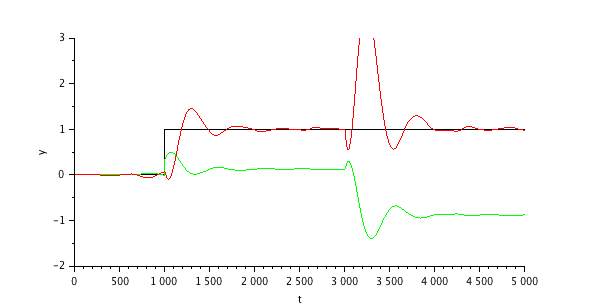The other strategy is adaptive tuning. Here, we assume that the DCS can provide three separate PID tuning constants. The zones, shown in figure below, are selected to span the operating conditions from 20,000 kg/h (gain of 6) to 110,000 kg/h (gain of 0.8), with a uniform ratio from one zone to the next.

Now that we have the process gain defined for each zone, we also have estimates for appropriate process dead time and time constant.

The dead time is quite large in the low range, which will make a 40 second response time very challenging for a PID controller. We will select response times of 80, 60 and 40 seconds for each of the ranges to reduce oscillations caused by aggressive tuning. The appropriate PI tuning constants are.

The tuning will be very good in the middle of each zone, but how will this perform at the edge of a zone? The response at the bottom end of the low zone (20,000 kg/h) is shown below.

This is very good. The performance at 20,000 kg/h is better than that obtained with output characterization at the startup rate of 33,000 kg/h. Gain scheduling permits better control for delay dominated processes.
This example is based on one of my past projects where a client had a particularly difficult heat exchanger control problem. The PID controller never worked from day one, despite many tuning attempts. The controller was left in MANUAL for several years at the expense of lost production. The consulting team applied gain scheduling to this problem. Hydraulic modelling was used to determine the required PID controller gain for each of the three zones, without any compensation for changes in the dead time or process time constant. The result was a temperature controller that performed reliably over the entire range of operating conditions, and allowed production rates to increase. The implementation did not require a plant outage, and there was no capital expenditure.
Project justification is usually based on the payback period. A payback period of five years is considered adequate during good times, but this may be reduced to one year if cash flow is difficult. The payback period for this particular project was less than four weeks.






